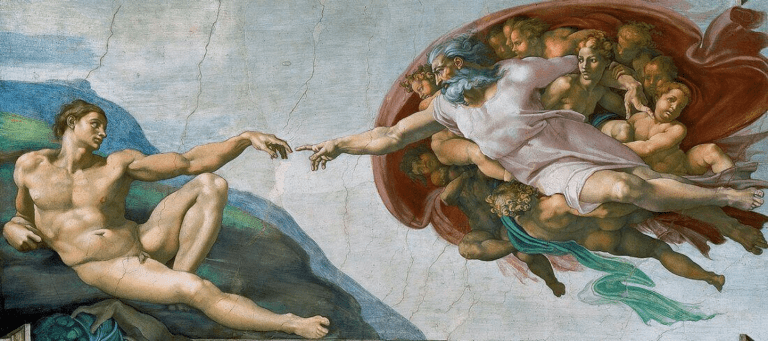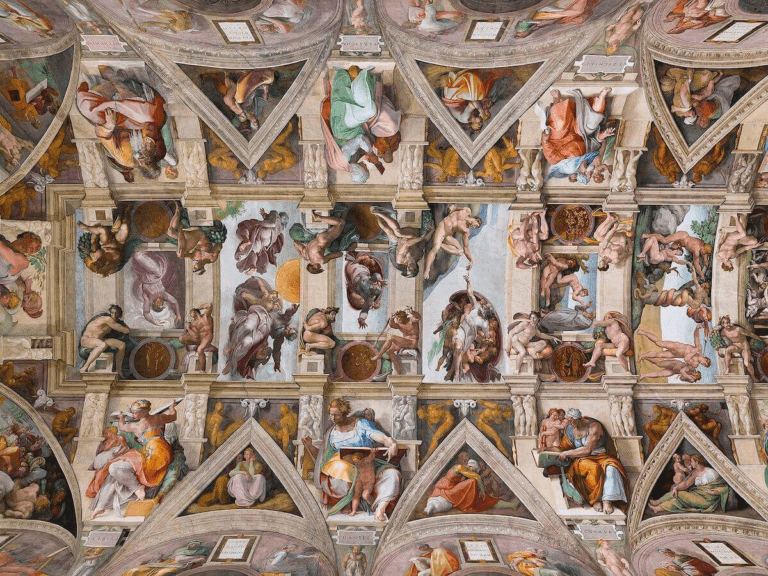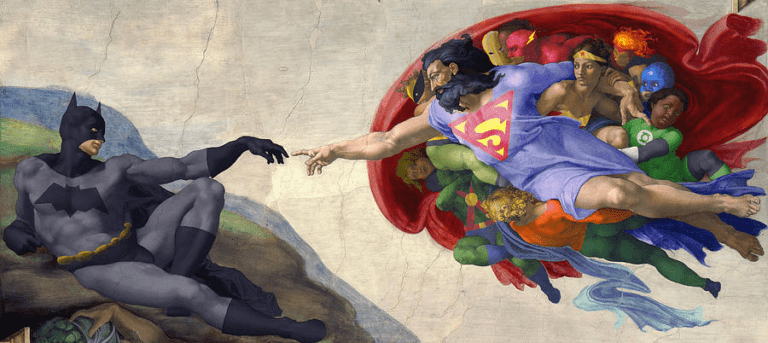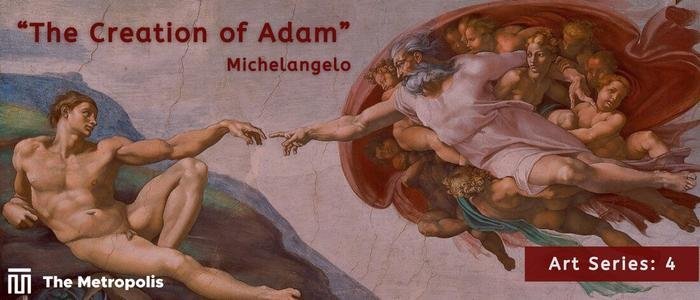Arya Tabassum –
“The Creation of Adam” is one of the most famous frescoes in the world and is located on the ceiling of the Sistine Chapel in Vatican City. It is considered to be in the High Renaissance art style and falls under the genre of religious art. This masterpiece is widely recognized as one of the greatest masterpieces of art history and is considered to be one of the defining images of Western Art.

The Creation of Adam was painted by the famous Italian artist Michelangelo Buonarroti between 1508 and 1512. The artwork is renowned for its religious, cultural, and historical value and is one of the most well-known pieces of art in the entire globe.
The Creation of Adam is an expression of the creation story in the book of Genesis in the Bible. It symbolizes the instant that God creates Adam and gives him life. In the picture, God is shown reaching out to touch Adam’s finger as he lies on the ground, signifying the moment when God gave Adam life.
Michelangelo’s depiction of God and Adam is full of symbolism and meaning. Adam is portrayed as a young, muscular man, reflecting the idea of life and vitality, while God is portrayed as an old man with a white beard and flowing robes. The arrangement of their bodies also has a symbolic meaning because God’s pointing finger and Adam’s extending hand represent the transmission of life and divine energy, respectively.
The artwork also represents the notion that God created people with a purpose and that they are special creations that are unlike anything else in the universe. The image of God reaching out to Adam and the care with which Adam’s physique, which is shown as being strong, healthy, and active, is used to convey this message. This highlights the notion that God gave humans a purpose and the capacity to achieve great things.
The Creation of Adam has also been seen as a cultural symbol. It has been seen as a representation of the Renaissance, a period of significant change and advancement in Europe. The arts, sciences, and admiration of classical culture all saw a resurgence during the Renaissance. As a return to classical ideas and the human form, the painting is seen as a sign of this rekindled interest and admiration.
The artwork also stands for people’s ambition to comprehend the world and produce works of art that convey their understanding. Michelangelo was a phenomenally gifted artist, and his depiction of The Creation of Adam is evidence of his capacity to convey intricate concepts and feelings via his work. The painting is a representation of how humans use art to communicate their desire to comprehend and create new things.
The Creation of Adam has also been seen as a symbol of historical significance. The artwork was finished during the 16th century, a period of significant change in Europe’s history. The painting is regarded as a reflection of the huge reform movement that the Catholic Church was undertaking at the time. The artwork is viewed as a representation of the Catholic Church’s dedication to upholding the religion as well as its authority and influence in the world.
The painting is also viewed as a representation of the Vatican, which at the time served as the seat of the Catholic Church, and its authority. Pope Julius II commissioned Michelangelo to create the Sistine Chapel, which was meant to be a representation of the Vatican’s strength and authority. The artwork serves as a representation of the dominance of the Catholic Church and the significance of the Vatican in the 16th century.

The Creation of Adam has greatly affected contemporary culture and innumerable designers, architects, and artists. Modern religious art is among the most noteworthy examples of this work’s inspirations. Numerous religious works of art have been influenced by The Creation of Adam’s dramatic composition, minute details, and expressive characters over the centuries. Even now, religious art still features the depiction of God and Adam reaching toward one another as a representation of hope and salvation.
The Creation of Adam has had a tremendous influence on architecture in addition to religious art. The style of churches, public areas, and even private residences have been affected by Michelangelo’s command of perspective and use of space. Architects have been motivated by the idea of God reaching out to touch Adam to design settings that foster a feeling of closeness and connection between the divine and the human.
The depiction of The Creation of Adam has become widely recognized in popular culture. It has been printed on many items including t-shirts, mugs, and phone covers, and has come to represent creativity and art everywhere.
This iconic artwork is seen in various scenes in the movie “Angels and Demons” where the protagonist Robert Langdon visits the Sistine Chapel. The Creation of Adam can be seen in various episodes of the popular television program “The Lost Symbol”, which features the Sistine Chapel in the background. Several albums, notably “The Creation” by Adam and the Ants and “The Creation of Adam” by RJD2, have utilized the artwork as the cover picture. Additionally, the painting frequently serves as the stage backdrop for classical music performances.
In recent years, The Creation of Adam has been referenced and parodied in numerous movies, television shows, and other forms of popular culture. It has also been used in advertisements and commercial products, further demonstrating its enduring popularity.

The Creation of Adam is regarded as one of the most well-known pieces of art in the entire world and is viewed as a representation of the Catholic Church, the Renaissance, and the Bible’s creation narrative. The artwork is evidence of Michelangelo’s creativity and capacity to convey intricate concepts and feelings through his art, and it continues to stand for the Vatican, the Catholic Church, and the yearning of all people to comprehend and create.




Interesting writeup!